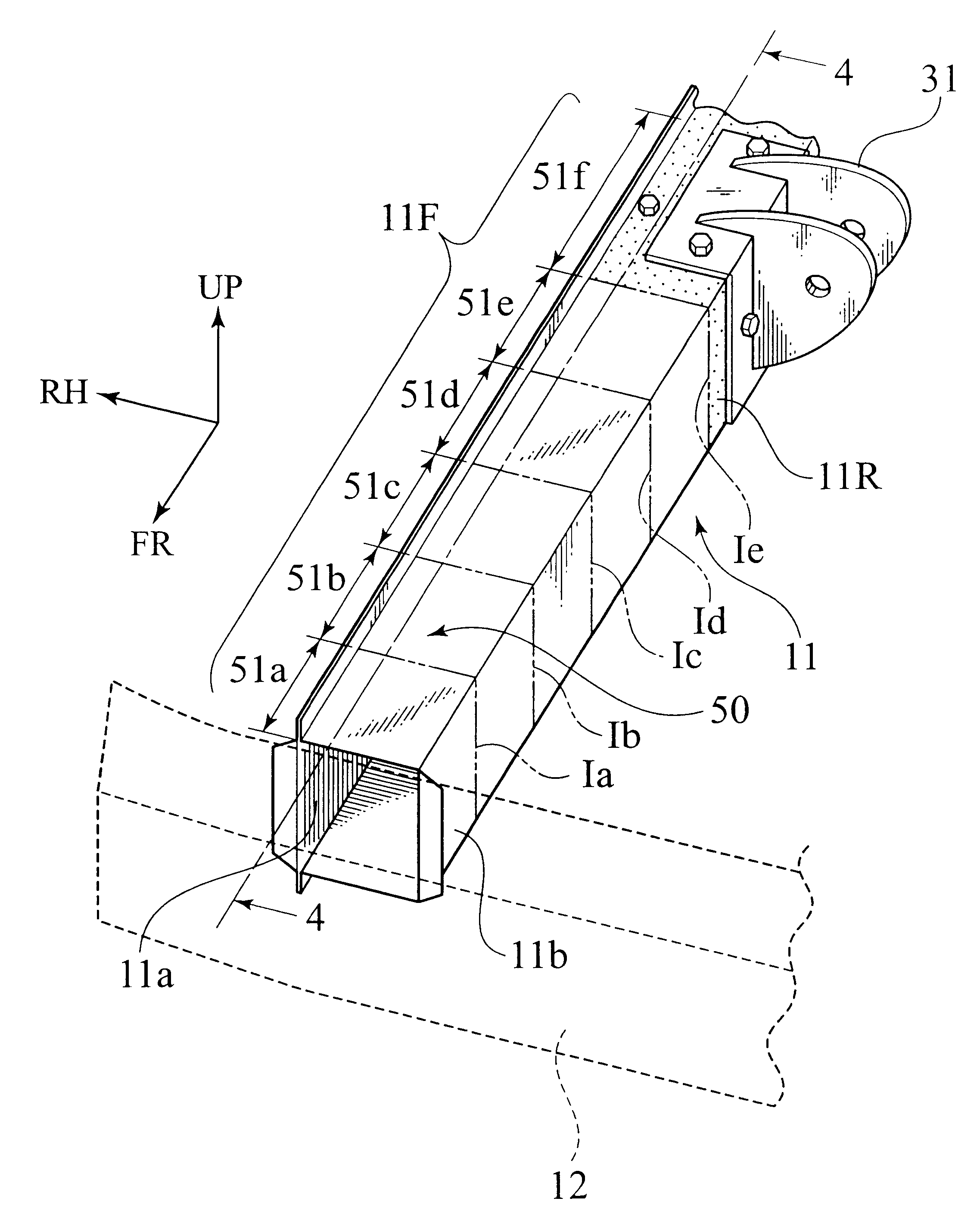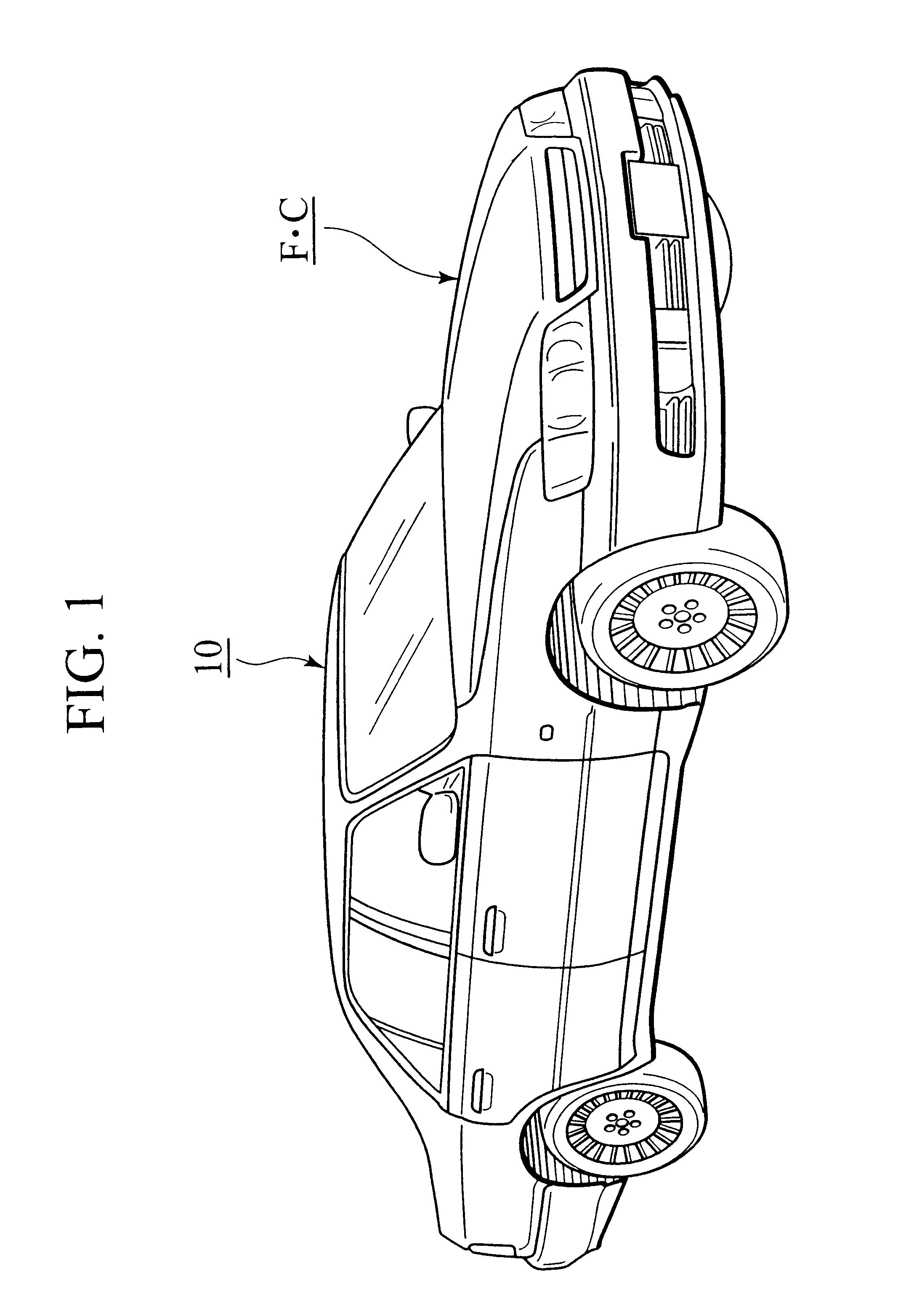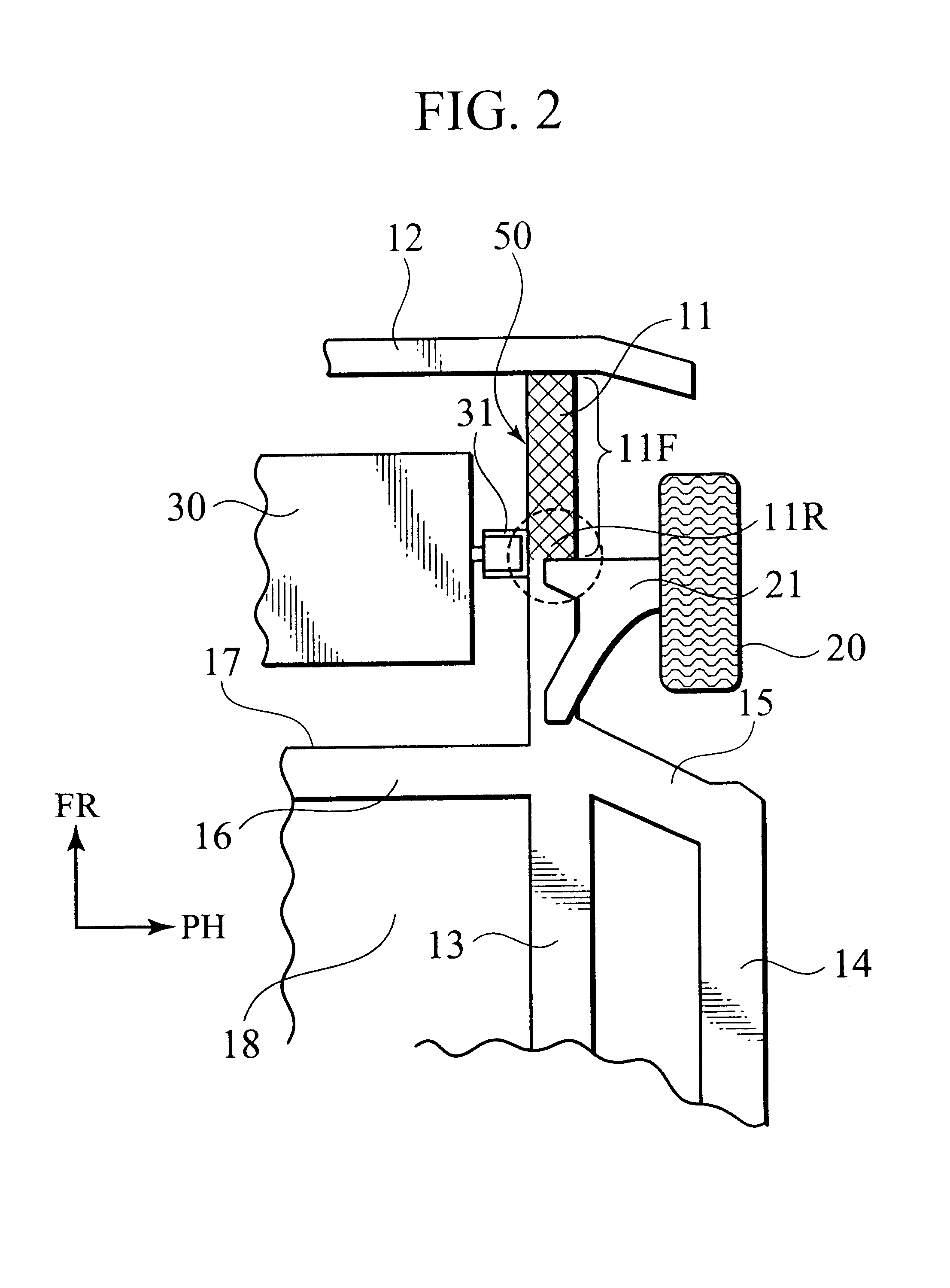Front body structure for vehicle
a front body and vehicle technology, applied in the direction of roofs, vehicle arrangements, transportation and packaging, etc., can solve the problems of difficult to achieve the load characteristics allowing continuous absorption of collision energy, and the weight of the vehicle body to be increased remarkably, so as to achieve effective energy absorption
- Summary
- Abstract
- Description
- Claims
- Application Information
AI Technical Summary
Benefits of technology
Problems solved by technology
Method used
Image
Examples
first embodiment
[0057]FIGS. 1 to 10 show the front body structure in accordance with the present invention. The front body structure of the embodiment is applicable to a front compartment FC of a vehicle body 10 of FIG. 1. As representatively shown in FIG. 2, the front body structure includes a pair of side members (only one shown) 11 arranged on both (left-and-right) sides of the vehicle body 10 to extend in the fore-and-aft direction of the vehicle straight. The side members 11 are parallel with each other and have their front ends joined to a bumper reinforcement 12 forming a framework of a not-shown bumper.
[0058]Behind each side member 11, an extension side member 13 is formed in succession so as to extend from a dash panel 17 to the underside of a floor panel 18. Outside the side members 11 in the width direction of the vehicle, a pair of side sills 14 are arranged so as to be substantially parallel with the side members 11. On each side of the vehicle, the front end of the extension side memb...
second embodiment
[0082]Then, the rigidity of the reinforcement part 11R mounting the power unit 30 (see FIG. 2) thereon can be ensured by the plate thickness t5 of the partition 61e. In the second embodiment, a plate thickness t of the circumferential wall of the side member 11 is established to be constant over the whole sections of the forward area 11F.
[0083]Therefore, according to the second embodiment of the invention, the maximum stress generated in the imaginary sections succeeding in the longitudinal direction of the forward area 11F when the collision load F is applied to the front end of the side member 11, can be controlled by the formation of the partitions 61a, 61b, 61c, 61d, 61e. Thus, the variable. partition-thickness structure 60 facilitates the adjustment of balance in strength, whereby the collapse K at the collision can be induced from the front end of the forward area 11F certainly, effecting the similar effects to the first embodiment.
[0084]Although the plate thickness t of the c...
fourth embodiment
[0095] the strength adjusting mechanism is formed by a variable sectional-dimension structure 70 where sectional dimensions x, y defining the forward area 11F gradually change in the longitudinal direction of the side member 11, as shown in FIG. 14.
[0096]In addition, the variable sectional-dimension structure 70 is formed so that, in the forward area 11F of the side member 11, a plate thickness t tapers off to its front end, as shown in FIG. 15. That is, in the forward area 11F, all of the sectional dimensions x, y and the plate thickness t changes in the longitudinal direction of the side member 11 continuously.
[0097]In this embodiment, the side member 11 is formed by an extrusion of light metals, such as aluminum alloy, providing the forward area 11F with the above variables x, y, t.
[0098]Also in this embodiment, there is established a condition that, when the collision load F is applied to the front end of the side member 11 statically, the maximum value {see the expression (1)} ...
PUM
 Login to View More
Login to View More Abstract
Description
Claims
Application Information
 Login to View More
Login to View More - R&D
- Intellectual Property
- Life Sciences
- Materials
- Tech Scout
- Unparalleled Data Quality
- Higher Quality Content
- 60% Fewer Hallucinations
Browse by: Latest US Patents, China's latest patents, Technical Efficacy Thesaurus, Application Domain, Technology Topic, Popular Technical Reports.
© 2025 PatSnap. All rights reserved.Legal|Privacy policy|Modern Slavery Act Transparency Statement|Sitemap|About US| Contact US: help@patsnap.com



